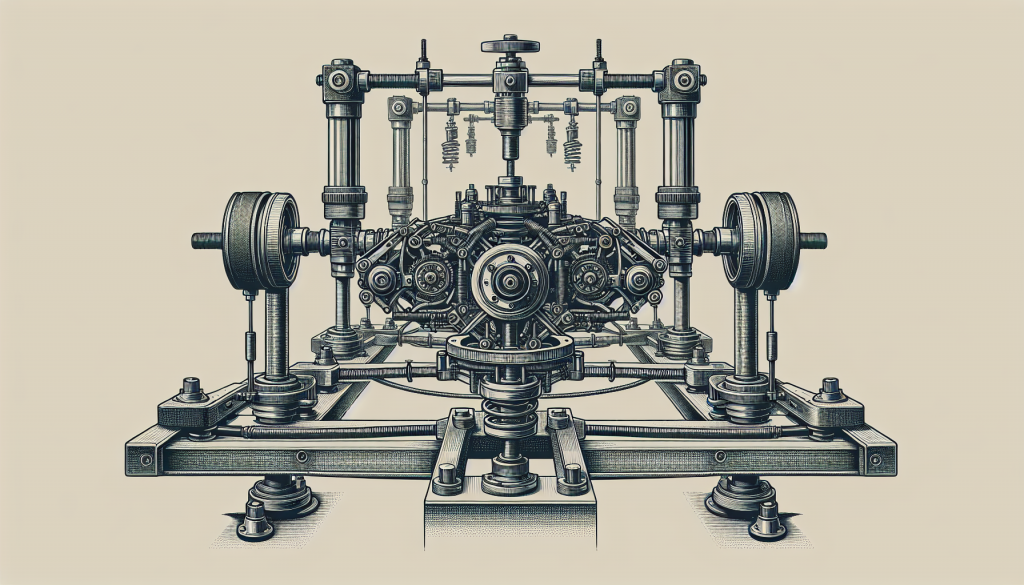Getting the Lowdown on Suspension Alignment Gear
Why Wheel Alignment Matters
Keeping your wheels aligned isn’t just about smooth rides—it’s about safety and saving money. When your wheels are properly aligned, your tires wear evenly, which means they last longer and your car uses fuel more efficiently. Misaligned wheels can cause uneven tire wear, make your car harder to handle, and even guzzle more gas. Regular alignment checks can nip these problems in the bud, making your car safer and more fun to drive. Want to know more? Check out our piece on why alignment matters.
What Makes Up Suspension Alignment Gear
Suspension alignment gear is like a toolkit for your car’s wheels. Here’s what you’ll find in it:
- Alignment Machine: This bad boy measures the camber, caster, and toe angles.
- Turn Plates: These go under your wheels and let them move smoothly while you’re making adjustments.
- Steering Wheel Holder: Keeps the steering wheel steady so you can make precise tweaks.
- Brake Pedal Depressor: Holds the brake pedal down to keep the wheels from moving.
Curious about each piece? Dive into our detailed article on suspension components.
Precision Tools for Spot-On Alignment
Getting your wheels aligned just right means using some pretty nifty tools. These gadgets make sure everything’s within the specs set by your car’s maker. Here are some of the key players:
| Tool | What It Does |
|---|---|
| Digital Camber Gauge | Measures the camber angle super accurately. |
| Toe Plates | Checks the toe angle by comparing the front and back of the tires. |
| Laser Alignment System | Uses lasers for pinpoint alignment measurements. |
Using these high-precision tools cuts down on mistakes and makes sure your alignment is spot on. This keeps your car safe and your tires lasting longer. Want the full scoop on these tools? Head over to our suspension alignment tools page.
Knowing why alignment is important, what gear you need, and which tools to use is a must for any car owner. Proper alignment means better performance, safety, and longer-lasting tires. For more tips and tricks, check out our all-in-one suspension alignment guide.
Mastering Wheel Alignment Techniques
Getting your wheels aligned right is key to keeping your car running smoothly and your tires lasting longer. Let’s break down some simple techniques to help you tackle common wheel alignment problems and keep your ride smooth.
Camber, Caster, and Toe: The Big Three
These three angles are the backbone of wheel alignment:
- Camber: This is the tilt of the wheels when viewed from the front. If the top of the wheels leans out, that’s positive camber. If it leans in, that’s negative camber. Getting this right helps your tires wear evenly.
- Caster: This is the tilt of the steering axis when viewed from the side. Positive caster helps with stability and makes steering feel more responsive.
- Toe: This is about whether the front of your tires point inwards (toe-in) or outwards (toe-out). Proper toe settings stop your tires from wearing out too fast and improve handling.
| Alignment Angle | Ideal Range (degrees) |
|---|---|
| Camber | -0.5 to 0.5 |
| Caster | 3 to 5 |
| Toe | 0.1 to 0.2 |
For more tips on adjusting these angles, check out our guides on adjusting camber in suspension, adjusting caster in suspension, and adjusting toe in suspension.
Hitting the Road After Alignment
Once you’ve made your adjustments, it’s time for a test drive. This helps ensure everything’s set up correctly. During the test, keep an eye out for:
- The car pulling to one side
- Steering wheel not centered
- Bumpy or rough ride
- Weird tire wear patterns
Aligning New Tires
Got new tires? Make sure to get them aligned right away. This prevents them from wearing out too soon and keeps your car handling well. For more on this, visit alignment check for new tires.
Training Technicians and Educating Customers
Technicians need solid training to get alignment right. This includes using suspension alignment tools and knowing the ins and outs of different suspension components. Ongoing education keeps them sharp on the latest techniques and gear.
Customers also need to know why regular alignment checks matter. Teaching them about the benefits of suspension alignment and signs of misalignment, like uneven tire wear or the car pulling to one side, can help them keep their vehicles in top shape.
Seasonal Adjustments and Watching Tire Wear
Weather and road conditions can mess with your alignment. Seasonal tweaks help keep things straight. For example, cold weather can make parts contract, throwing off alignment.
Keeping an eye on tire wear patterns can also clue you into alignment issues. Uneven wear might mean your camber, caster, or toe settings are off. Regular checks can catch problems early.
| Tire Wear Pattern | Possible Cause |
|---|---|
| Inner/Outer Wear | Incorrect Camber |
| Feathering | Incorrect Toe |
| Cupping | Worn Suspension Components |
For more on seasonal adjustments and tire wear, visit seasonal suspension alignment adjustments and monitoring tire wear patterns.
Mastering these alignment techniques keeps your car running great and your tires lasting longer. Proper training, customer education, and regular checks are the keys to a healthy vehicle.



